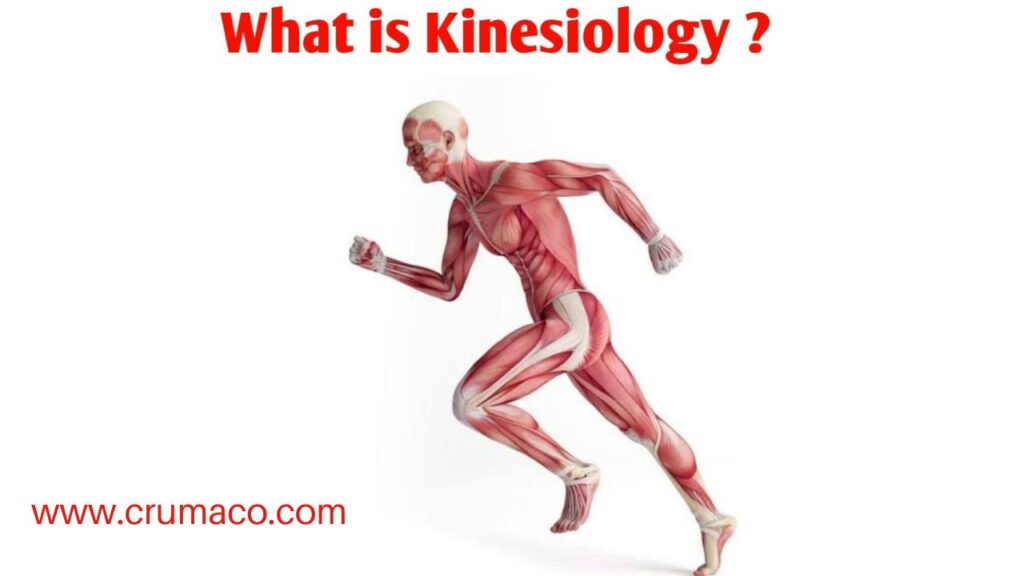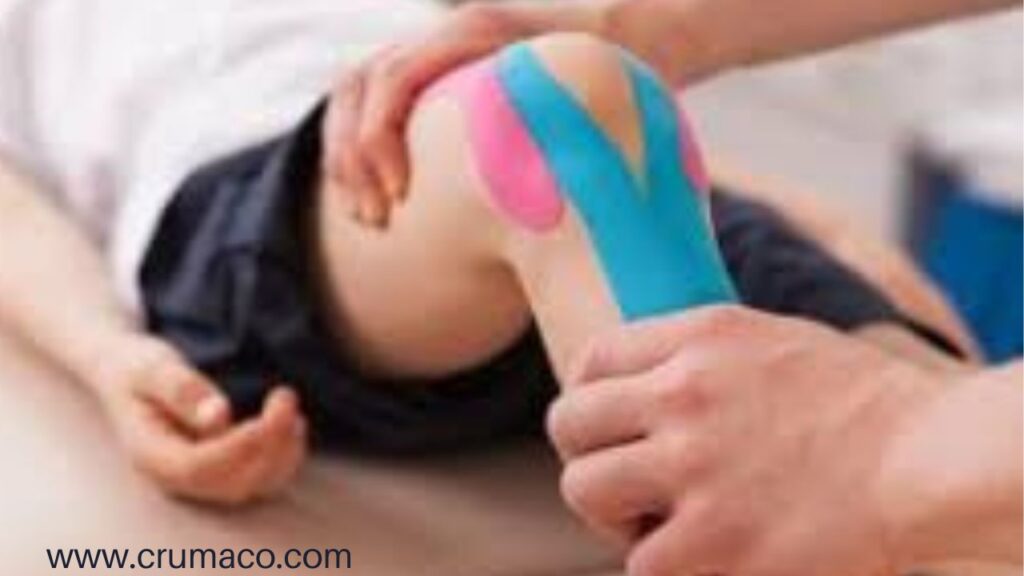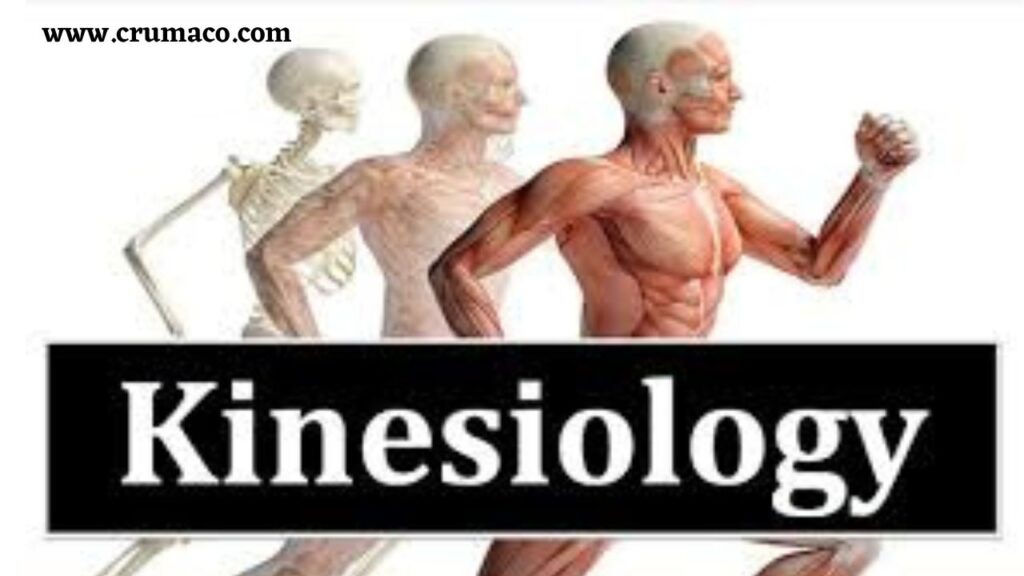Kinesiology Clinic in Delhi – Crumaco
Kinesiology and the Art and Science of Acupoint Selection

Crumaco is one of the best kinesiology clinic in Delhi. The goal of Kinesiology is to establish a biofeedback mechanism between the nervous system and the skeletal muscles. This procedure is called muscle monitoring.
Chinese medicine uses an intuitive pulse diagnosis technique similar to this one.
Identifying where blockages to healing are located, understanding why they exist, and allowing the body to indicate how to resolve them can be helpful.
To develop an appropriate treatment plan, it is essential to understand how to apply this information to clinical practice.
It is an integral part of the body’s meridian network, which facilitates the exchange of energy between internal and external environments, and works on both anatomical and energetic levels.
Using acupressure corrections in clinical practice requires a thorough understanding of the theories and treatment protocols involved in balancing the meridian system.
A combination of Kinesiology and Chinese medicine suggests the body’s muscles and organs can store information and energy, including traumas. As a result of the systemic memory hypothesis, all cells are thought to store information, which can be retrieved from the muscles and organs.
There are systems of correspondence (resonances) in medicine. These resonances are a major element in the Five Element theory, in that Organs store patterns of information unique to them that can be combined with brain patterns.
Submeridians and main meridians are associated with every part of the musculoskeletal system.

What is Kinesiology?
Kinesiology is the study of how movements impact our health and wellbeing. The course uses a holistic approach as well as the principles of Anatomy, Biomechanics, and Psychology to help increase or repair patients’ physical mobility.
As a result of the versatility of kinesiology degrees, they are becoming more popular in a broad range of fields, including health (body as well as mind), fitness, sport, and recreation.
Here are the 9 main objectives of Kinesiology:
- Relaxation
- Correcting the alignment and posture of the body
- Increasing joints mobility
- Increasing muscle strength
- Increasing muscular endurance
- Coordination, control, balance
- Exercise training
- Respiratory re-education
- Sensory re-education
What are the main Kinesiology specialisations?
Graduates of kinesiology can specialize in:
Exercise Science:
Upon graduation, graduates teach people how to keep fit, exercise, and practice sports as sports teachers, trainers, or coaches.

Kinesiology & Physical Therapy:
By utilizing techniques such as massage, reflexology, therapeutic recovery, lymphatic drainage, and others, specialists help people maintain their physical and mental health.
Fitness & Nutrition:
It is important for professionals to teach their patients how to stop allergies and maintain a healthy mind and body through supplements, vitamins, and sport.
A day in the life of a kinesiologist
The purpose of kinesiology professionals is to help people recover their health or stay fit and avoid injuring themselves by using exercises, stretches, and weights. They work with people in clinics, one-on-one, teams, or studio settings. In addition to helping clients enjoy life again, Kinesiologists can develop lifelong relationships with their clients with their soft skills, such as leadership and coaching. A colleague, Ioana, a kinesiotherapist, shares her thoughts about the career she chose: “You are a kinesiotherapist who performs assessments and develops exercise therapy programmes to meet the needs of patients who are referred to you by a physician or nurse practitioner. Classes in art therapy (colours, music, dance), exercise, psychology, occupational therapy, and recreation can all be combined as part of your treatment.
In order to make things easier for yourself and others, all you need is your imagination and the desire to learn and develop together with others, and you’ll be able to make the world a better place.
The meridian channels contain acupuncture points.
It is through the vibration of acupoints that informational resonance travels through the meridians and internal organs, restoring balance to the body. Chemical messengers send signals to the nervous system by stimulating acupoints that activate nerve or brain cells, release hormones, and influence our immune systems. This process transfers energy throughout the body, and blood flow is also stimulated, resulting in a healthy body. The significance of this is that the blood is a powerful carrier of all the nutrients and hormones the body needs to heal, including oxygen, nutrients we absorb from our food, immune substances, analgesics, and anti-inflammatory substances. Several modalities have helped contribute to the therapeutic use of the meridian system, and acupuncture is only one.

Many others are also available, such as:
- Relaxation
- The practice of Qigong
- The martial arts
- Affluence
- The astrological system
According to Chinese medicine, nature is governed by yin/yang and the Five Elements, which the ancient Chinese observed by monitoring the stars, planets, oceans, animals, seasons, and human behavior.
Those raised with a Western scientific understanding of the body may find Chinese medicine’s physiological model difficult to comprehend.
In science, acupuncture needles open specific brain parts that correspond to different hemispheres.
Monitoring brain activity using fMRI has demonstrated this.
Through a multi-part series, we will explore the art and science of acupoint selection as well as how evidence-based protocols can still play an essential role in Kinesiologists’ ‘best practice’ through the development of a ‘healing partnership’ which includes the art of healing (insight-based) and the science of medicine (evidence-based).
The healing relationship can play a significant role in explaining the efficacy of treatment and advice, but it can never replace the relationship that leads to healing.

How does kinesiology work?
There is a wide range of treatments that are employed by kinesiologists To overcome injuries, kinesiologists use an evidence-based treatment method known as active rehabilitation, which uses progressive therapeutic exercises and a range of motion techniques to assist in making the recovery process easier. In addition to the many injuries that can result from motor vehicle accidents (VMAs), sports, work, or everyday activities, active rehabilitation is one of the most common forms of treatment for these injuries. It has been proven to be effective and safe.
Besides working with their clients in the aquatic setting, kinesiologists are also certified to provide therapy in an aquatic setting for those who have had severe injuries and need the therapeutic effects of buoyancy in the water to help them recover. Additional training opportunities are available for kinesiologists to become certified and qualified to perform treatments like soft tissue release, concussion rehabilitation, yoga and Pilates instruction, cardiopulmonary and respiratory care, and many more.
In my experience, Kinesiologists do a great deal of work in the field of physical therapy, which can serve as a great complement to the rehabilitation program offered to patients. In Ontario, where a professional body regulates Kinesiologists can provide a more comprehensive service to their community. Learn more about the benefits of treating yourself with a Kinesiologist at your local Lifemark clinic. Find out how you can incorporate your Kinesiology treatment with other common Lifemark services, like physiotherapy and massage therapy, chiropractic therapy, and many others!
As the demand for kinesiologists grows, so does the supply.
The baby boomers are now significantly affected by conditions such as arthritis, osteoarthritis, diabetes, and heart disease due to limited advances in physical health care during the 80s and 90s, minimal promotion of healthy diets, and increased participation in high-impact sports. Hip and knee replacement surgery rates have increased by 25% since 2010 and are expected to rise by another 25-45% by 2023. It is now time to act for baby boomers (and even millennials) since we should all pay attention to what is happening with our joints and the musculoskeletal system to ensure they don’t suffer cumulative injuries or degenerative musculoskeletal conditions in the future.

Kinesiologists are here to help.
It is the field of kinesiology that specializes in biomechanical and musculoskeletal functions. In addition to acute care after an injury or surgery, they also provide long-term care and ‘Prehab,’ a program designed to reduce the risk of future injuries. It is anticipated that as the baby boomer generation seeks treatment for soft tissue injuries, chronic pain, arthritis, and assistance in returning to daily activities, the role of kinesiologists will continue to expand. A kinesiologist can prepare the musculoskeletal system to handle the stresses of increased workouts for those who want to reclaim their youth.
You can rely on a kinesiologist to restore joint range of motion, improve strength, correct imbalances and compensatory patterns, or manage pain. Kinesiologists can provide hydrotherapy to patients whose pain or other symptoms are severe. Hydrotherapy eliminates the impact on joints by allowing the patient to perform therapy in a pool.
A kinesiologist can also provide active rehabilitation to patients, allowing them to decrease their pain medication use by improving their function level and correcting muscular imbalances.
Since the late 2000s, active rehabilitation has been growing steadily. It will continue to do so as new research supports the idea that reactivation and re-training of the mind and body reduce disease risk and results in greater long-term symptom relief than passive therapies. Physiotherapists, massage therapists, chiropractors, and other healthcare providers are now collaborating with kinesiologists to provide patients with the best outcomes.

The application of Systematic Kinesiology to long-term health conditions: how does it work?
At a Bristol-based support group for people experiencing long-term health conditions, I recently talked about Systematic Kinesiology, particularly regarding fibromyalgia and Myalgic Encephalomyelitis. Those attending the talk will have the opportunity to experience kinesiology through live demonstrations as well as explore how kinesiology supports people with long-term health conditions.
How do Myalgic Encephalomyelitis and Fibromyalgia differ?
In the Department of Health’s definition of a long-term condition, a condition cannot currently be cured but is controlled by medication and other treatments/therapies. There are some similarities between M.E. and fibromyalgia:
- Neither disease has a known cause.
- Both are chronic diseases.
- Both are more prevalent in women.
- The symptoms are complex.
- A laboratory test cannot confirm the diagnosis (only to rule out other diagnoses).

The Art and Science of Acupoint Selection using Kinesiology
Muscle monitoring (also referred to as muscle testing) is the defining feature of Kinesiology. This procedure establishes a biofeedback mechanism between the nervous system and the skeletal muscles.
This technique is very similar to the intuitive pulse diagnosis of Chinese medicine.
This can help to identify where blockages to healing may exist, why they exist, and allow the body to indicate how to balance these pathways.
A clear understanding of how to use this information in clinical practice is key to developing an appropriate treatment plan.
Working with the Qi and its flow has both an anatomical and energetic component and is an intrinsic part of the meridian network, which provides an exchange between the body’s interior and exterior.
The theories and treatment protocols for balancing the meridian system can be fairly technical, complex, and overwhelming for those seeking to utilise acupressure corrections as part of their clinical practice.
Both Kinesiology and Chinese medicine suggest that the muscles and organ tissues store information and energy, for example, about traumas. The systemic memory hypothesis suggests that all cells store information, and therefore this information can be potentially retrieved from muscles and organ systems. Chinese philosophy and medicine are based on systems of correspondences (resonances). These resonances form a significant part of Five Element theory in that the Organs store patterns of information that are unique and can be added to information stored in the brain.
Every part of the musculoskeletal system is related to a main meridian and its associated sub-meridians.
Acupoints are functional sites along the meridian channels.
Acupoints have a unique vibration or ‘frequency signature’ through which an informational resonance passes through the meridians and internal organs to restore balance.
By stimulating an acupoint, the nervous system receives signals and responds by activating nerve or brain cells, releasing hormones, and influencing our immune system through chemical messengers.
This creates a transfer of energy throughout the body that also stimulates blood flow.
This is significant because everything the body needs to heal is in the blood, including oxygen, nutrients we absorb from food, immune substances, hormones, analgesics and anti-inflammatories.

Acupuncture is only one modality that has contributed to the therapeutic use of the meridian system.
There are many others including:
- Meditation
- Qi Gong
- Martial Arts
- Feng Shui
- Astrology
The ancient Chinese observed nature by monitoring the activities of the stars, planets, oceans, animal kingdom, seasons, and human behavior. The idea that all of nature is governed by yin/yang and the Five Elements lies at the heart of Chinese medicine.
Chinese medicine’s physiological model can be difficult to accept and comprehend for people who have been brought up with a Western scientific view of the body.
Scientifically we know that specific points open different hemispheres of the brain when needled.
This has been demonstrated using fMRI to monitor the changes in brain activity.
In this multi-part series we will delve deeper into the art and science of acupoint selection and how evidence-based protocols can still form a functional part of the ‘best practice’ of a Kinesiologist through a ‘healing partnership’ that includes the art of healing (insight driven) and the science of medicine (evidence driven).
It provides a lens to explain the efficacy of treatment and advice, but can never replace the healing relationship.
